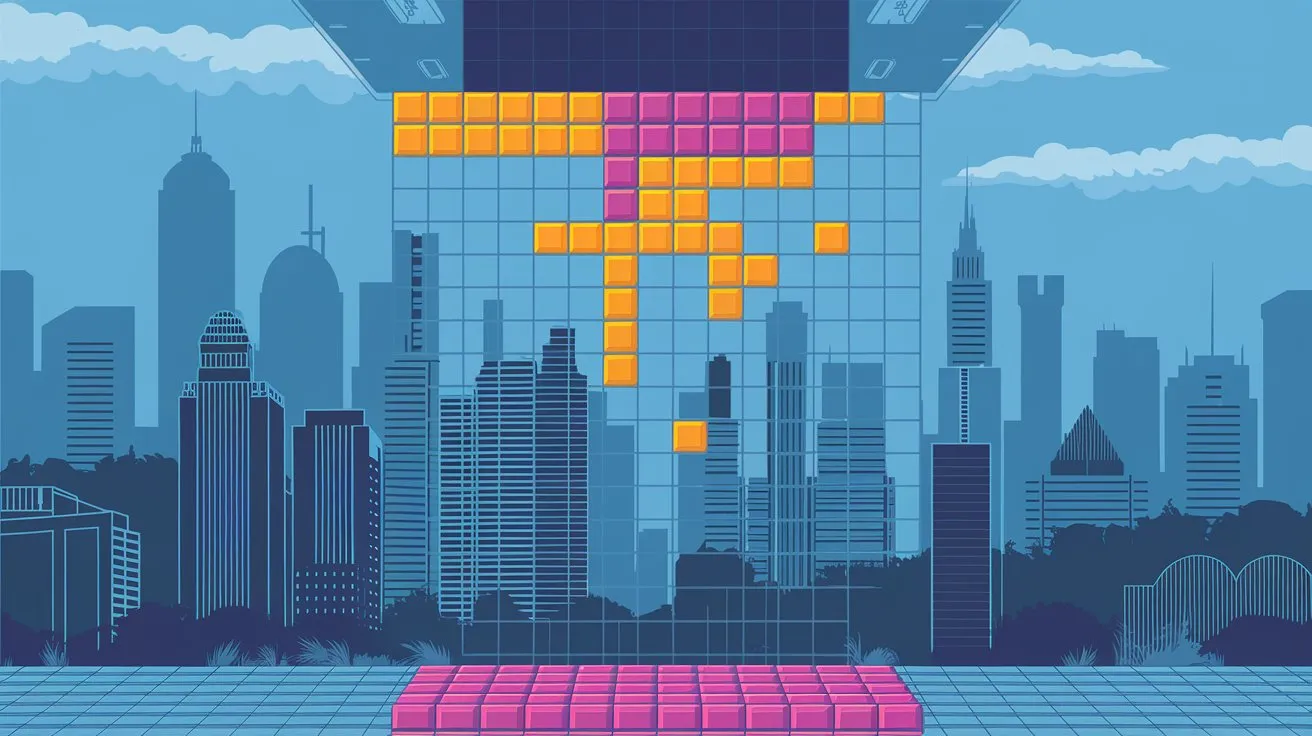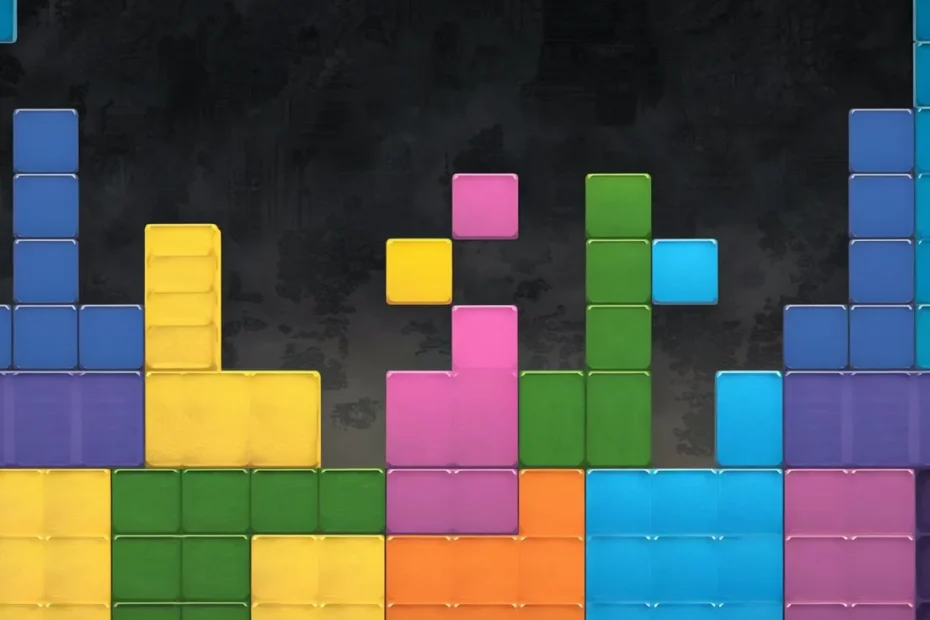Tetris is more than just a classic puzzle game it’s a cultural icon that has transcended generations. Created by Alexey Pajitnov in 1984, this deceptively simple game challenges players to arrange falling blocks known as tetrominoes into complete lines. The satisfaction of clearing those lines and the thrill of reaching new high scores have kept players captivated for decades. In this article, we’ll explore the history, psychology and strategies behind Tetris along with personal anecdotes that illustrate its enduring charm.
A Personal Story: The First Encounter
I remember the first time I stumbled upon Tetris. It was a rainy afternoon and I was visiting my uncle’s house. He had a retro Game Boy and I was instantly drawn to the pixelated screen and the hypnotic falling blocks. I picked it up and before I knew it, hours had passed. The thrill of clearing lines became a challenge I couldn’t resist. That experience not only ignited my love for gaming but also instilled in me a deep appreciation for strategy and quick thinking. Fast forward to today and Tetris continues to hold a special place in my heart and on my devices.

The Evolution of Tetris
From Humble Beginnings to Global Phenomenon
Tetris was developed in the Soviet Union during a time of limited access to video games. Pajitnov created the game as a simple exercise for computer programming students never imagining the global phenomenon it would become. The original version ran on a Soviet computer called the Electronika 60, featuring simplistic graphics that laid the groundwork for the future.
When the game was ported to the Game Boy in 1989, Tetris took the world by storm. The combination of portable gaming and an addictive puzzle mechanic made it a staple in every gamer’s library. Tetris has since evolved into numerous versions, including mobile apps, online platforms and competitive play continually adapting to new technologies while retaining its core appeal.
Technological Advancements
As technology has progressed so has Tetris. New iterations have introduced advanced features, such as multiplayer modes, themed versions and even virtual reality experiences. The game’s flexibility has allowed it to remain relevant adapting to the changing preferences of gamers around the world.
The Psychology Behind Tetris
Cognitive Benefits
Studies have shown that playing Tetris can enhance cognitive abilities, particularly in spatial awareness and problem solving. Research published in the journal Cognitive Psychology suggests that playing Tetris can even increase the brain’s gray matter enhancing the player’s ability to visualize and manipulate objects in space.
For many, Tetris serves as a mental workout. The fast paced nature of the game requires players to think quickly and strategically making split second decisions about where to place pieces. This can translate into improved decision making skills in everyday life.
The Tetris Effect After long periods of playing, many players report visualizing Tetris shapes in their surroundings or even dreaming about them. It’s a testament to how immersive and engaging the game can be showing how our brains can adapt to repetitive tasks and find patterns even in real life.
Strategies for Mastering Tetris
Understanding Tetriminoes
To excel at Tetris it’s crucial to understand the seven different tetromino shapes: I, O, T, S, Z, J and L. Each shape has unique characteristics and can be used strategically to clear lines. Familiarity with these pieces allows players to anticipate their movement and effectively plan their placements.
Stack Management
One of the key strategies is maintaining a flat stack of blocks. A flat stack makes it easier to place new pieces and reduces the risk of the stack reaching the top of the screen too quickly. Avoid creating deep wells or jagged formations as these can lead to missed opportunities for line clears.
The Hold Feature
Most modern versions allow players to “hold” a tetromino for later use. This feature can be game changing especially in high pressure situations. For instance, if you have an I piece in reserve you can save it for when you need to clear multiple lines or fit it into a tight spot.
T-Spins: The Advanced Technique
T-Spins are advanced maneuvers that involve rotating the T-shaped piece into a specific position to clear lines. Mastering T-Spins can yield higher points and make you a formidable player. Practicing this technique can significantly improve your gameplay especially in competitive environments.
Focus on Clearing Multiple Lines
The ultimate goal in Tetris is to clear lines efficiently. Striving to clear multiple lines at once not only maximizes your score but also helps manage your stack better. This strategy requires planning ahead and positioning pieces with foresight.
![]()
Personal Reflections on Competitive Play
Finding My Place in the Community
Years later, I decided to dive deeper into the Tetris community. I joined online forums and participated in local tournaments, where I met players from diverse backgrounds all united by their love for the game. Competing against others added a new layer of excitement and challenge. I remember my first tournament vividly my hands trembled as I played against seasoned veterans but the adrenaline rush was unparalleled.
The Joy of Sharing Strategies
Being part of the community also meant sharing tips and strategies with fellow players. One of my favorite moments was when a player taught me the importance of visualization seeing the next pieces in my mind’s eye before they even appeared on the screen. This technique helped me anticipate moves and improved my overall game.
The Cultural Impact of Tetris
Tetris in Art and Music
Tetris has influenced various forms of art and music over the years. From gallery installations that incorporate elements to modern remixes of its iconic theme song, the game has inspired creativity beyond the gaming world. The theme music composed by Hirokazu Tanaka has been remixed in countless ways, proving its timeless appeal.
Tetris in Education
In recent years, educators have harnessed the principles of to teach concepts such as geometry and problem solving. By integrating game mechanics into the classroom teachers are able to engage students in a unique way fostering critical thinking and collaboration.
FAQs on Tetris Tips and Strategies
Q1: How can I improve my Tetris skills quickly?
A: Regular practice is key. Try to play daily focusing on different strategies like stack management and T-Spins. Watching skilled players on platforms like Twitch can also provide insights into advanced techniques.
Q2: What should I focus on when starting to play Tetris?
A: Focus on understanding the tetromino shapes and developing a strategy for stacking pieces. Keep your stack flat and practice using the hold feature to save crucial pieces.
Q3: What is the best way to clear lines efficiently?
A: Aim to clear multiple lines at once by planning your moves ahead of time. Utilizing the I piece effectively can help you clear four lines simultaneously resulting in a “Tetris.”
Q4: Are there specific tools to track my progress?
A: Many Tetris games offer built in statistics and leaderboards. You can also use apps that track your high scores and gameplay patterns for self improvement.
Q5: How can I stay calm during intense gameplay?
A: Practice deep breathing techniques and take breaks when needed. Familiarizing yourself with the game will also help reduce anxiety during high pressure situations.
Conclusion
Tetris is not just a game it’s a phenomenon that has shaped the lives of many. Its blend of strategy, psychology and community engagement offers players a rich experience that goes far beyond mere entertainment. Whether you’re a casual player or a competitive enthusiast Tetris continues to challenge and inspire.
Reflecting on my journey with Tetris from that rainy day at my uncle’s house to participating in tournaments I realize that the game has taught me valuable life lessons about patience, strategy and the importance of community. As we navigate through the complexities of our own lives the simple joy of clearing lines in Tetris serves as a reminder that with practice and perseverance, we can overcome any challenge.
So, whether you’re dusting off your old Game Boy or diving into the latest mobile version embrace the challenge, enjoy the experience and most importantly have fun playing Tetris.
